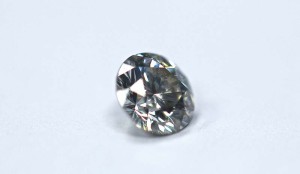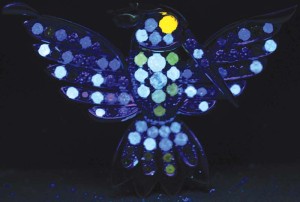Diamond types

Diamonds are typically classified into four categories: Type Ia, Type IIa, Type Ib, and Type IIb. Type Ia and Type Ib indicate the relative presence of nitrogen (N), while Type IIb refers to the presence of boron (B). Type IIa diamonds are considered the rarest of diamonds due to their absence of impurities.
Approximately 97 per cent of natural diamonds are considered Type Ia. These can occur in all colours, although brown, ‘cape’ yellow, and near-colourless are the most common. Blue diamonds are classified as Type IIb, accounting for only 0.1 per cent. Less than one per cent of all diamonds are Type Ib ‘canarian’ orangey-yellow to brown diamonds, while two per cent of all diamonds are Type IIa colourless, brown, and pink.
Synthetic diamonds are created using high pressure, high temperature (HPHT) or carbon vapour deposition (CVD). These processes can produce near-colourless Type IIa diamonds, yellow to orange Type Ib, pink Type Ib or IIa (after annealing and irradiation), and blue Type IIb. As such, identifying approximate diamond type can help in the initial screening for natural or synthetic origin. Using a method discussed further on in this article, one can look for birefringence, which is present in natural diamonds. The absence of birefringence or very weak expression of this effect can indicate that a diamond was grown quickly through a man-made process.
Determining exact diamond type is done by means of a Fourier transform infrared spectroscopy (FTIR) in a well-equipped gem lab. This tool can also conclusively identify a synthetic diamond when used in combination with visible and photoluminescence spectrometers.

Alexei Zarakhani, owner of Advanced Optical Technology Co. (AOTC) in Ottawa, says most of the HPHT diamonds his company produces are sold in North America. “There is high interest in blue and colourless lab-grown diamonds, so we have almost stopped production of yellow and pink diamonds,” he explains. “Approximately 60 per cent of our production is blue and the rest is colourless, the vast majority being VS clarity.”
AOTC reports more than 50 per cent of the diamonds it created in 2004 and 2006 were VS quality or better, and colourless production in those years totalled one per cent and five per cent, respectively. The results suggest lab-grown near-colourless diamonds are improving in quality and gaining popularity in the marketplace.
Most lab-grown diamonds are smaller than one carat and very common in sizes less than 10 points. Given most melee is never sent to advanced labs to test for origin, it is likely that finished jewellery on the market today comprises lab-grown smalls. To make matters worse, identifying mounted melee synthetics is difficult even with advanced spectroscopic instruments.





